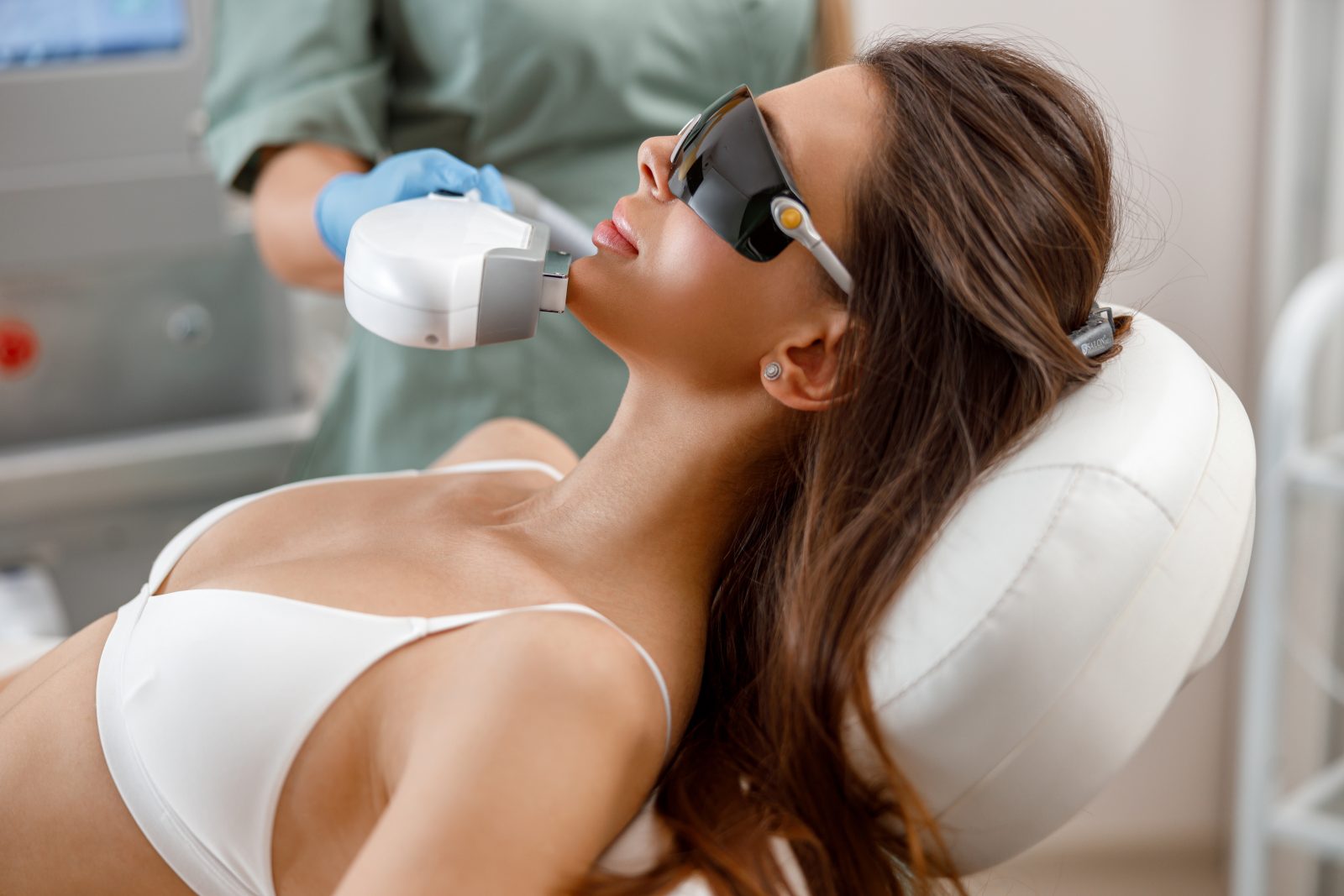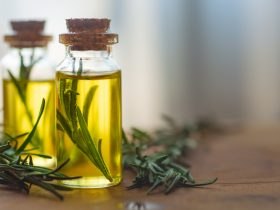Intense pulsed light (IPL) therapy, commonly known as a photo facial or phototherapy light, is a non-surgical method to enhance skin texture and color. Its effectiveness lies in its ability to reverse visible damage attributed to sun exposure, often referred to as photoaging. The phototherapy side effects are prominent on the face, neck, hands, and chest.
IPL treatment holds potential for individuals experiencing skin concerns like redness, pigmentation irregularities, or uneven skin tones due to health conditions.
How IPL Treatment Works
IPL therapy utilizes light energy to target specific colors present in your skin.
By gently raising the skin’s temperature, the procedure prompts your body to eliminate undesirable cells. This subsequently addresses the issue for which you’re seeking treatment. Unlike laser light therapy, IPL devices emit multiple wavelengths of pulsating light, allowing for the simultaneous treatment of various skin conditions.
Following an IPL session as intensive skin therapy, a notable benefit often emerges: a more even skin tone, which can contribute to a youthful appearance. Given that the light energy solely focuses on the targeted area, there’s minimal impact on surrounding tissues, leading to a swift recovery period.
Choosing the Right Practitioner for IPL Treatment
A board-certified dermatologist should administer IPL Treatment. (You might observe the abbreviation FAAD — indicating a fellow of the American Academy of Dermatology — after their name.) Alternatively, a nurse or physician assistant might also possess the necessary skills to perform it. Regardless of the provider, ensure that they have expertise in the field of IPL.
Who is an Ideal Candidate for IPL Treatment?
IPL Treatment yields optimal results for individuals with fair or light brown skin tones. If you’re considering reducing or eliminating the following skin concerns, consult your dermatologist:
- Acne
- Birthmarks
- Stretch marks
- Liver or age spots
- Broken blood vessels
- Brown spots also referred to as liver or age spots
- Hyperpigmentation from hormonal fluctuations
- Uneven skin tone
- Fine wrinkles
- Freckles
- Rosacea-related redness
- Scars
- Spider veins
- Unwanted hair
Who Might Not Be Suitable for IPL Treatment?
It’s essential to engage in discussion with your healthcare provider, particularly if:
- You are currently pregnant
- You have an existing skin condition
- You are taking medications for other medical concerns
IPL treatment might not be advisable if you:
- Exhibit sensitivity to light
- Have recently undergone sun exposure, utilized tanning beds, or applied tanning creams, resulting in skin tanning
- Potentially have a skin cancer concern
- Used a retinoid cream
- Possess a very dark skin complexion
- Experience a skin resurfacing disorder
- Struggle with severe scarring
- Have keloid scar tissue
Preparation for Your Appointment
On the day of your scheduled IPL appointment, it’s recommended to abstain from using perfume, makeup, and scented products that can potentially cause skin irritation.
Effectiveness of IPL Treatment
The outcomes of IPL treatment are contingent upon the specific concerns you aim to address.
Redness Reduction: For most individuals, light therapy treatment can eliminate 50%-75% of broken blood vessels after one to three sessions. These vessels can disappear completely. While treated veins don’t return, new ones may emerge over time.
Rosacea Management: In cases where rosacea triggers facial flushing, IPL treatment is a promising alternative to laser red laser therapy. Enhanced results might be achieved if you fulfill the following criteria:
- You are below 40 years of age
- Your condition falls within the moderate to severe range
- Sun Damage Mitigation: Expect a reduction of around 70% in brown spots and redness stemming from ultraviolet (UV) rays.
Hair Removal: Optimal results are attained if you possess fair skin and dark hair. However, if you have dark skin or blond hair, the effectiveness of IPL treatment may be limited.
Acne and Scarring: IPL can alleviate acne and associated scarring. Typically, noticing significant differences may require approximately six sessions. Ongoing research is shedding light on further benefits.
Risks and Side Effects of IPL Treatment
When administered by a trained technician, IPL treatment is considered safe. However, there is a possibility that hormonal brown spots could experience a flare-up as a result of the treatment. Additional unwanted side effects could also manifest.
IPL treatment can result in various skin responses, including:
- Scarring
- Sensations of discomfort or pain
- Swelling
- Occasional bleeding
- Risk of infection
- Alterations in skin pigmentation
- Formation of crusts
- Blisters
In case you experience feelings of illness post-treatment or notice worsening symptoms, it’s advisable to consult your dermatologist promptly.
Expectations During IPL Treatment
Pre-Treatment Preparations:
- Before undergoing the procedure, ensure the following:
- Refrain from tanning outdoors, using tanning beds, or applying tanning creams for at least four weeks prior.
- Avoid waxing, chemical peels, or collagen shots within two weeks before the scheduled treatment.
- Abstain from using perfume, makeup, deodorant, or any skin-irritating products.
- Refrain from consuming aspirin or other medications that can lead to increased bleeding.
If you’re taking medications that heighten your sensitivity to sunlight, such as the antibiotic doxycycline, inform your healthcare provider.
Upon arrival at the clinic, a technician or dermatologist will apply gel to your cleansed skin. To shield your eyes, you’ll be provided with dark glasses. The handheld IPL device will be positioned on the targeted area of your body. The session typically ranges from 20 to 30 minutes, with larger treatment areas potentially requiring an hour or more.
While most individuals tolerate the light pulses well, they can experience a slight stinging sensation. Some liken it to the sensation of a rubber band snapping against the skin. To alleviate potential discomfort, your dermatologist can offer numbing cream to be applied 30-60 minutes before the commencement of red light therapy for psoriasis.
Dealing with Recovery After IPL Treatment
After the treatment concludes, you might experience sensations akin to sunburn lasting approximately 4-6 hours. Easing the discomfort can involve employing ice packs or applying a cool washcloth.
In the immediate aftermath, your skin could exhibit redness or bruising for a day or two. Certain brown spots may appear darker initially, but rest assured, they will likely shed within a few weeks.
During Your Healing Period:
- Avoid wearing makeup if your skin feels tender.
- Embrace moisturizing lotions to nourish your skin.
- Safeguard your skin with sunscreen, ideally featuring an SPF of 30 or higher and containing a physical blocker like zinc. Apply it every 2 hours, even on cloudy days.
- Opt for a gentle cleanser suitable for sensitive skin during face washes.
The dermatology treatments will guide you on the suitable timing to reintegrate your regular skin care regimen. Typically, this transition might occur within a week.
The standard practice involves three to seven IPL sessions, contingent upon the specific concern being addressed. The time interval between each session typically spans 2-4 weeks. While immediate changes might not be evident, it’s worth noting that notable improvements in your skin may take several weeks to become noticeable.
Important Things to Remember About IPL
It’s important to acknowledge that these procedures come at a cost. As of 2018, the average fee per IPL session was approximately $400. It’s worth noting that insurance plans typically don’t cover cosmetic procedures. To explore financial options, inquire with your dermatology clinic regarding the availability of payment plans.
While IPL treatment can enhance your skin’s appearance, it’s imperative to understand its limitations. It does not possess the ability to halt future aging processes, nor can it address the underlying conditions responsible for your skin concerns. Maintaining your improved appearance may necessitate follow-up treatments once or twice a year.
Other Options for IPL Treatment
There are alternative approaches that can also address skin issues like spots, fine lines, and redness:
- Microdermabrasion: This technique involves using tiny crystals to gently exfoliate the topmost layer of your skin, known as the epidermis.
- Chemical peels: Similar to microdermabrasion, this method employs chemical solutions applied to the facial area to achieve a comparable effect.
- Laser resurfacing: This procedure involves the removal of the damaged outer skin layer to stimulate the production of collagen and new skin cells. Lasers utilize a solitary wavelength of concentrated light. Conversely, IPL employs pulses or flashes of diverse light types to target various skin concerns.
















Find Us on Socials